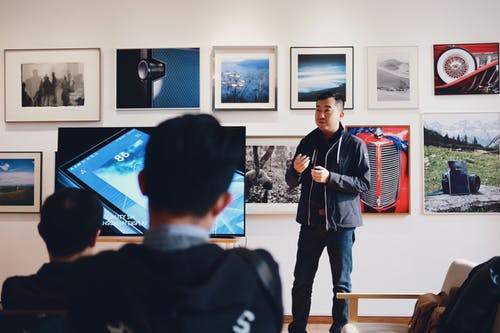
I have valued each student as a person is pursuing a self – respecting education as such is the possibility of adding humanity to this humanity that always walks along the ledge. Diversity in school is between all of us, but often it is posed as a problem and not as the opportunity to humanize ourselves to grow and understand each other. However…
- Samos various pedagogically?
- Governments work beyond discourse to understand that we are different?
- I think education as state policy think that the classroom is composed of diverse learners?
Each one of our students is a daily challenge in our classrooms. The classroom is the representation of a world on a minimal scale in which we converge: it, its context and we, the teachers; So, why take away that ‘wealth’ they bring from being themselves? Why not get to learn from that wealth?
I remember that nobody has a monopoly on knowledge. That conception of education is not valid in the 21st century – we should not be under the protection of the mind colonizers, as during the splendour of positivism, or are we? -; therefore, adults should not train; Teachers should not be indoctrinated and parents should not domesticate. A school is a place where you learn to live together and this implies specific knowledge and links with others, but for a real world that is not ideal.
The biggest challenge of the current times is that the education system must contain a true diversity policy and, for this, it needs to practice with concrete actions. In this practice is true respect for human dignity; this is how we begin to recognize and accept the differences between human beings – since we generate tolerance. However, if the pedagogical curricular discourses are written from a model of unique, homogeneous and masterful curriculum , diversity remains in a blind, deaf and mute story because our students are forced to learn in adversity, since they are presented a model in which the reality of the classroom and the ideal world of written paper are divorced.
We must try to accentuate the processes of interaction in the classroom, to make possible quality education for all, but remember that integration is not a novelty at all.
Various pedagogically
The people are not born from an assembly line -yet- nor are we programmed as standard; each one of us is not a sum of different pieces of a machine, we are human; ergo, educational systems are the ones that have to be pedagogically diverse.
- Estamos prepared for the diversity in our classrooms?
- Hay segregation in classrooms caused by education systems?
- Generates bullying to what I know?
To diversity in the classroom breathe and feel social change because our classrooms are active, are alive and represents society.
The inclusive approach in the classroom is based on the appreciation of diversity. Diversity is seen as an enriching element of the teaching-learning process. With this, human development will be “motorized”: the more “classroom variety” the richer this learning will be.
Diversity includes
With “diverse” classrooms, there is an abundance of opportunities for students to interact with their peers, generating consensus and disagreements, to think together, dialogue, cooperate, feel, grow and educate with emotions; to have fun, to support each other -when things do not work out for them-, to work cooperatively and collaboratively, in small groups or with all their colleagues. Why? Simple: we live in society and life is made in society. We do not train hermit students; because, if we do that, it is a sign that something is not right, something we do not do well.
A school that attends to the individual characteristics of its students in order to satisfy their educational needs is, in general, the idea of the new educational paradigm in this 21st century. More connected, but more incommunicado and with these ideas we would return to the principles of education. In this way, it has happened that, traditionally, the school has been ‘closed’ to diversity, as if all of us who have attended school, were equal.
Each human being is different and, therefore, the keyword to value this wealth is education. Diversity in the classroom is a real and positive issue. Diversity is an intrinsic characteristic of human groups, since each person has a special way of thinking, feeling and acting.
For all the above, we must bet on stimulating gender equality and equity and to erase those stereotypes that cause prejudices to be present in a very harmful way.
Innumerable are the educational systems that are based on a homogenous education model, when today the globalized society is characterized, increasingly, by its diversity. However, educating in a diverse classroom is a great challenge, however, it is not impossible: it implies a paradigm shift that humanizes education, if we achieve this change, we will all change.
“It is very difficult for me to understand the nature of all things, it is natural to be different, this difference makes us unique to others … then why do you point me as different from you?; Are we not different and therefore essentially the same?











